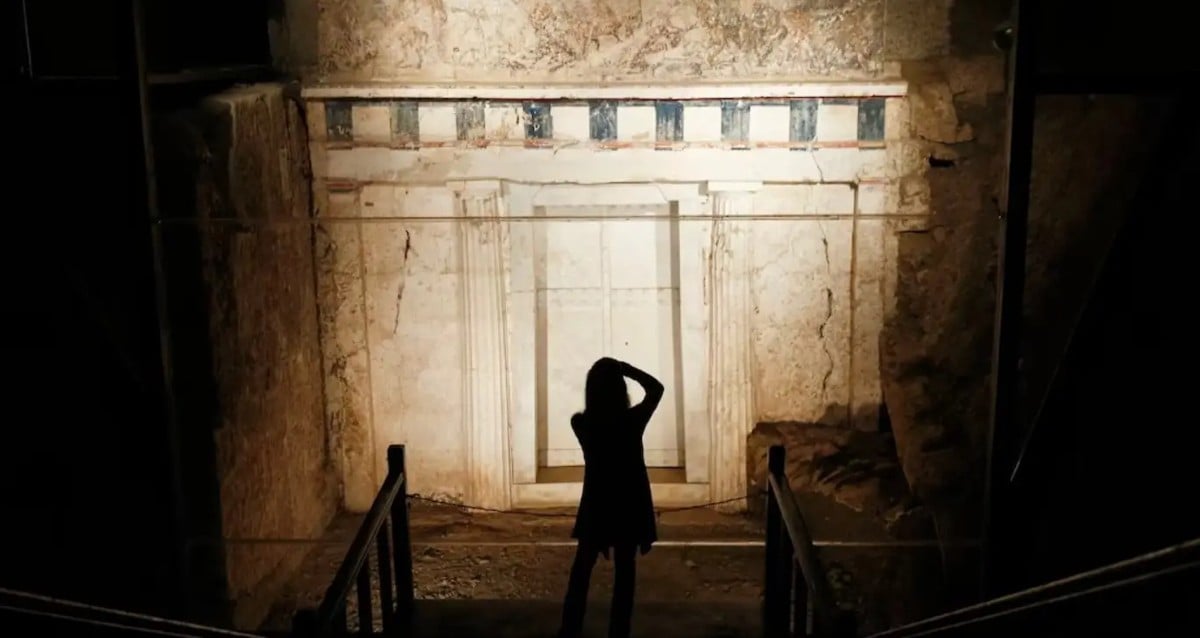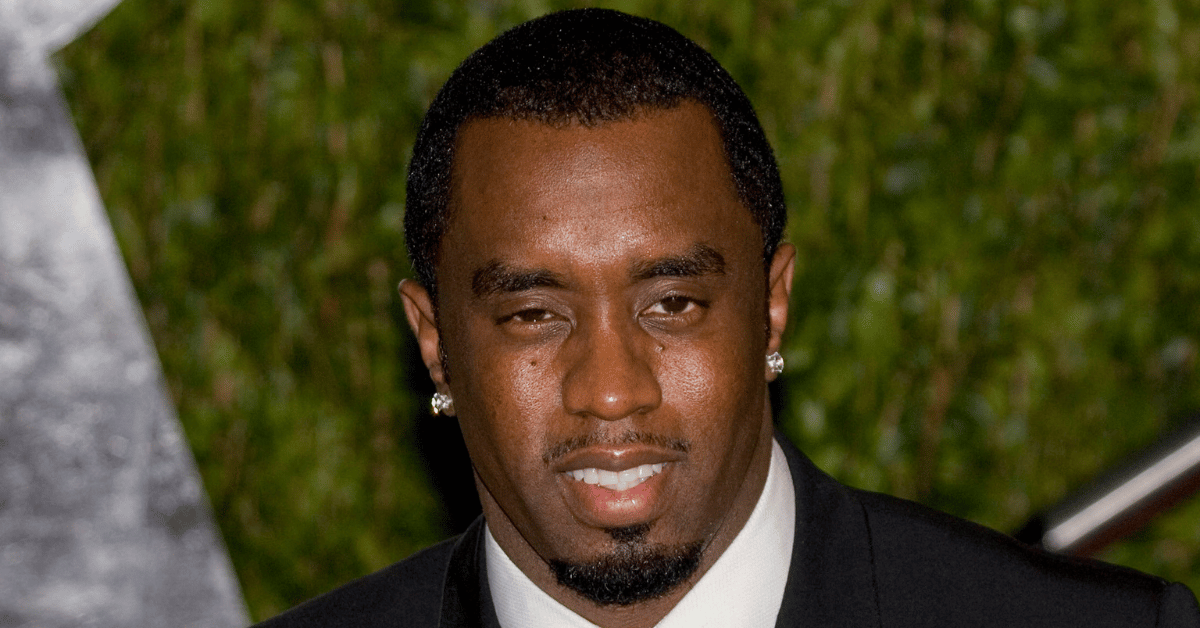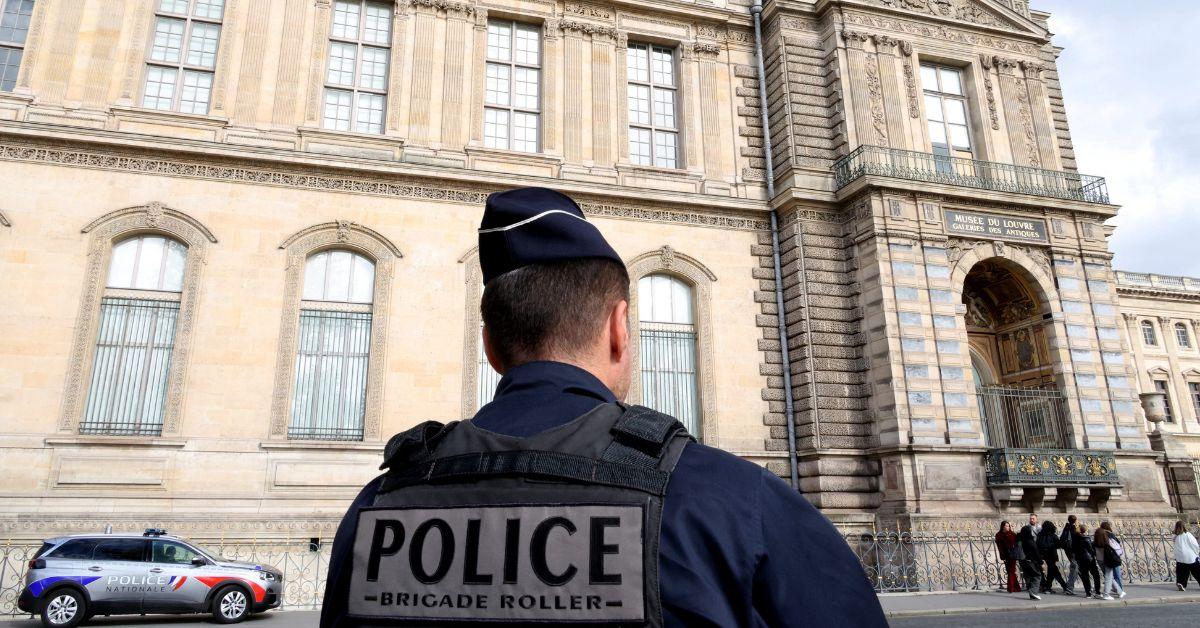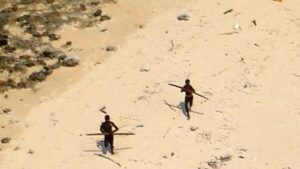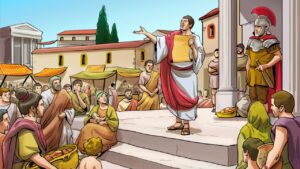Mystery Deepens: Ancient Greek Tomb Linked to Alexander the Great’s Father Reveals Unexpected Family Secret
For decades, Tomb I at Vergina in northern Greece stood proudly in the history books as the final resting place of King Philip II of Macedon—Alexander the Great’s dad and a legendary figure in his own right. But, plot twist: recent sleuthing with new forensic wizardry tells a different tale. Turns out, the bones inside don’t quite fit the biography of the king who was assassinated at 46. Instead, there’s a younger mystery man, a young woman, and six infants who crash this ancient party, raising more questions than they answer. So, if it’s not Philip II in Tomb I, then who exactly is sleeping under that grand tumulus? And where on earth is the real Philip? It’s like a real-life history whodunit, full of twists worthy of a daytime soap… but with a few more skulls. Ready to dig in deeper? LEARN MORE
Though Tomb I at Vergina in northern Greece was long thought to hold the remains of King Philip II of Macedon, new analysis shows that it may actually be the burial site of a separate, unknown Macedonian king.

Panegyrics of Granovetter (Sarah Murray)/Wikimedia CommonsThe entrance to Tomb I at Vergina, once believed to hold the remains of King Philip II of Macedon.
In northern Greece, there lies a collection of ancient tombs believed to be connected to Alexander the Great that have befuddled historians for decades. Located at Vergina and dubbed Tomb I, Tomb II, and Tomb III, they were long thought to hold Alexander the Great’s father, his half-brother, and his son. However, while many historians indeed believed that Alexander the Great’s father, King Philip II of Macedon, was buried in Tomb I, a new study claims that this isn’t true.
Rather, Tomb I appears to hold the remains of a man much younger than Philip, a young woman, and six infants who were added to the tomb centuries later. The identities of the man and the woman remain a mystery, as does the exact location of the tomb of Philip II — much like the tomb of Alexander the Great himself.
New Analysis Of Tomb I At Vergina, Thought To Hold King Philip II Of Macedon

Colin W./Wikimedia CommonsAn entrance to the royal tombs at Vergina in northern Greece.
In 1977, researchers in Vergina discovered a tomb complex known as the Great Tumulus. Located at the necropolis of Aegae, once the capital of Macedonia, the tombs were believed to hold the remains of Alexander the Great’s father, King Philip II, his older half-brother King Philip III Arrhidaeus, and his son, Alexander IV. Though the original researchers suspected that Philip II was in Tomb II, a study in 2024 suggested that he was in Tomb I.
But now, the results of that study have been challenged. In a new report published in the Journal of Archaeological Science, researchers found that the remains inside Tomb I at Vergina couldn’t possibly belong to Philip II, who was assassinated in 336 B.C.E when he was roughly 46 years old.
Instead, Tomb I, also known for its mural of Hades abducting Persephone, appears to hold a much younger man who was between 25 and 35 years old when he died. This man is buried alongside a woman — who died between the ages of 18 and 25 — and radiocarbon dating suggests that they both lived sometime between 388 and 356 B.C.E.

Public DomainA mural of Hades abducting Persephone that was painted on the walls of Tomb I at the Great Tumulus in Vergina.
Researchers also identified the remains of six infants inside Tomb I, and it’s believed that they too are unrelated to Alexander the Great. The infants’ remains date from 150 B.C.E to 130 C.E., the Roman era, and researchers suspect that they were simply placed in the tomb out of convenience by desperate people who just needed somewhere to put their dead.
“[D]ating indicates that Tomb I was partly visible during the Roman period… so it may be hypothesised… that grieving parents of dead newborns from the Roman period recognized this place as a ready-to-use deep grave for disposing their dead,” the researchers explained in their study. “Disposing of dead infants in an underground void… or in an old tomb, was not an uncommon practice in antiquity, especially in the Roman period.”
Thus, this new study presents more questions than answers. Who are the pair buried in Vergina’s Tomb I? And where is King Philip II’s tomb?
Remaining Questions About The Great Tumulus Tombs In Vergina

David GrantThe layout of the various tombs in Vergina, Greece.
By studying skeletal and dental remains, the researchers were able to learn several things about the pair buried in Tomb I at Vergina. The man seemingly spent his childhood away from the Macedonian capital of Pella (which succeeded Aegae as the seat of power), whereas the woman seemingly spent her childhood in the Pella area. Though their identities remain a mystery, their tomb is opulent, which suggests that they were Macedonian royals.
“The male occupant was most likely an important Macedonian royal of the Argead/Temenid house who died in the period 388 to 356 B.C.E.,” the researchers wrote in their study, “and was probably honored or worshipped in the shrine above and entombed likely together with a female.”
